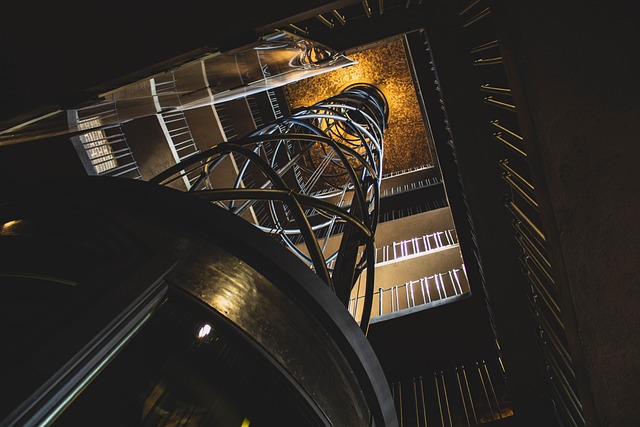Internal linking and a well-designed SEO site structure optimize website navigation for users and search engines. Logical hierarchies, strategic linking, and content categorization enhance crawlability, user experience, and site authority. This integrated approach improves search rankings, increases organic traffic, and drives conversions by aligning content with user interests and search intent.
A well-structured website is the cornerstone of effective On-Page SEO. Internal linking, a strategic must-have, transforms your site into a powerful resource for search engines and users alike. At SEO University by Salterra, we demystify internal linking’s impact on site architecture, crawlability, and user engagement. This comprehensive guide explores how internal links strengthen content relationships, elevate page authority, and optimize your SEO site structure design, ultimately driving better search rankings.
- Understanding Internal Linking: A Basic Overview
- Site Architecture: The Backbone of SEO Success
- Enhancing Crawlability: How Links Impact Search Engines
- User Engagement: Building a Seamless Experience
- Improving Search Rankings: Unlocking Page Authority
- Content Relationships: The Power of Connectivity
- Best Practices for Effective Internal Linking
- Site Structure Design: A Comprehensive Guide
Understanding Internal Linking: A Basic Overview

Internal linking is a fundamental aspect of Search Engine Optimization (SEO) that involves creating strategic links between pages within your website. This simple yet powerful technique plays a pivotal role in improving how search engines crawl and index your site, ultimately impacting its visibility and rankings. By connecting relevant pages, internal links guide search engine crawlers and users alike, making it easier to navigate your website’s vast information.
At its core, understanding internal linking requires recognizing the value of content categorization and SEO-friendly silo structures. Organizing your site with a logical hierarchy and interconnected themes enhances both user experience and search engine optimization. This approach, often referred to as Navigation Optimization SEO, ensures that each page has a clear purpose and is linked to relevant counterparts, creating a comprehensive network that supports overall website performance.
Site Architecture: The Backbone of SEO Success

A well-designed website architecture serves as the bedrock upon which successful On-Page SEO strategies are built. It is a structured network that connects every page, enabling search engine crawlers to navigate effortlessly and understand the relevance of content across your site. At its core, an effective SEO site structure incorporates logical organization and intuitive navigation, ensuring that both users and search algorithms can find their way around with ease.
This concept is closely intertwined with internal linking best practices. By strategically placing internal links within relevant content, you guide search engines and visitors alike to valuable pages on your website. Topic clustering for websites, a key component of structured website architecture, involves grouping related content together. This not only enhances user experience by providing contextual information but also reinforces the site’s overall authority and relevance, ultimately contributing to better search rankings.
Enhancing Crawlability: How Links Impact Search Engines

Search engines rely on a website’s structure and links to understand its content and navigate through pages. Well-placed internal links play a pivotal role in enhancing a site’s crawlability, ensuring that search engine crawlers can access and index every page efficiently. When internal linking is implemented correctly as part of an SEO site structure design, it creates a clear hierarchy and path for these crawlers to follow. This process allows search engines to discover new pages, understand their context, and improve overall site visibility.
By implementing Internal Linking Best Practices, websites can avoid Technical Siloing SEO issues that might fragment the site’s authority. Optimized navigation, including strategic link placement, aids in Navigation Optimization SEO, making it easier for users and search engine bots to explore the site. This seamless interaction between internal links and a well-designed SEO site structure ultimately contributes to better page rankings and enhanced online presence.
User Engagement: Building a Seamless Experience

A well-structured website is designed to engage users and facilitate their navigation, thereby enhancing overall site performance. User engagement isn’t just about aesthetics; it’s about creating a seamless experience that encourages visitors to explore more pages, interact with content, and ultimately convert into leads or customers. A key aspect of this is internal linking, which plays a pivotal role in both improving SEO site structure design and user retention.
By implementing strategic internal linking, websites can effectively categorize related content, fostering a logical flow that guides users through different sections. This content categorization SEO approach aligns with the way search engines crawl and index pages, making it easier for them to understand the context and hierarchy of information. Moreover, a well-planned silo SEO audit ensures that content is organized in a manner that reflects relevant user interests, boosting page authority and boosting the site’s overall ranking potential.
Improving Search Rankings: Unlocking Page Authority

A well-structured website is like a map that guides search engines and users alike. When we talk about improving search rankings, it all starts with a solid SEO site structure design. This means organizing your pages in a logical hierarchy, making it easier for both search engine crawlers and visitors to navigate through your content. By implementing a SEO-friendly silo structure, you create distinct yet interconnected categories that enhance the overall architecture of your website.
This strategic approach not only improves crawlability but also unlocks page authority. Each internal link acts as a vote of confidence from one page to another, signaling to search engines the relevance and importance of specific content. As a result, pages with strong internal linking tend to rank higher in search results, attracting more organic traffic and ultimately driving better performance for your website. A thorough Silo SEO audit can help identify areas for improvement within your structured website architecture, ensuring that every page is optimized to contribute to your overall SEO goals.
Content Relationships: The Power of Connectivity

In the context of SEO site structure design, content relationships refer to the way different pages on a website connect and support each other. This connectivity is crucial because search engines like Google use complex algorithms to understand the context and relevance of web pages. By strategically linking internal pages, you create a clear hierarchy and thematic connections that signal to search engines what your website is about. For instance, if you have an article about “Digital Marketing Strategies,” internal links from related topics such as “Social Media Marketing” or “SEO Best Practices” reinforce the central theme, making it easier for search engine crawlers to index and rank your content accurately.
Implementing effective SEO site structure design involves techniques like Keyword Mapping with Silos and Silo Structure Implementation. Content Siloing Techniques help organize information by grouping related pages under specific categories or ‘silos.’ This not only enhances crawlability but also ensures that each page within a silo has a clear, focused purpose. Such structured content relationships not only improve user experience by making navigation intuitive but also increase the overall authority of your website in the eyes of search engines, thereby boosting its chances of securing higher rankings for relevant keywords.
Best Practices for Effective Internal Linking

To implement best practices for effective internal linking, start by understanding your audience’s navigation patterns and content consumption habits. Organize your website with a logical SEO site structure design that mirrors the information architecture of your topics. Adopt an advanced silo SEO approach where related content is clustered together under relevant categories, creating a clear URL hierarchy planning. This hierarchical structure ensures search engines can efficiently crawl and understand your pages’ relationships.
Additionally, employ keyword mapping with silos to optimize internal links for specific keywords. Strategically place anchor texts that include targeted keywords to guide users and search engine crawlers alike. Ensure each link adds value by directing users to content that satisfies their information needs. Regularly review and update your internal linking strategy to keep up with changes in user behavior, keyword trends, and SEO best practices.
Site Structure Design: A Comprehensive Guide

A well-designed site structure is pivotal to effective SEO site structure design. It serves as a roadmap for both users and search engines, ensuring every page is accessible and its purpose clear. A hierarchical layout, often facilitated by a Silo Structure for Blogs, allows visitors to navigate seamlessly while enabling search engine crawlers to index content efficiently. This strategic organization of pages, known as an SEO-friendly Silo Structure, contributes to a robust website architecture that optimizes user experience and enhances page authority.
When structuring a website, it’s crucial to consider the relevance and hierarchy of content. Grouping similar topics under broad categories creates a logical flow, making it easier for both users and search algorithms to understand the site’s content map. Website Architecture Optimization goes beyond aesthetics; it involves thoughtful placement of links, internal navigation menus, and breadcrumbs to foster a natural user journey while promoting relevant pages to search engines. This holistic approach to SEO site structure design is key to achieving higher rankings and driving organic traffic.
